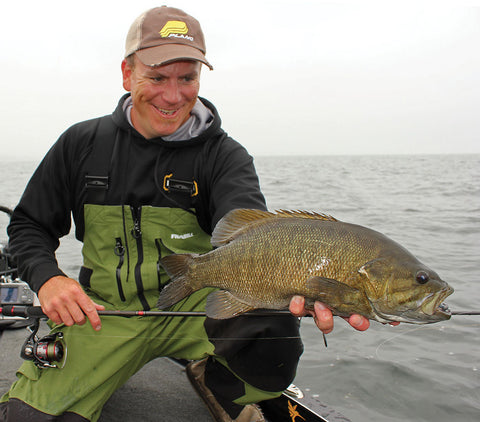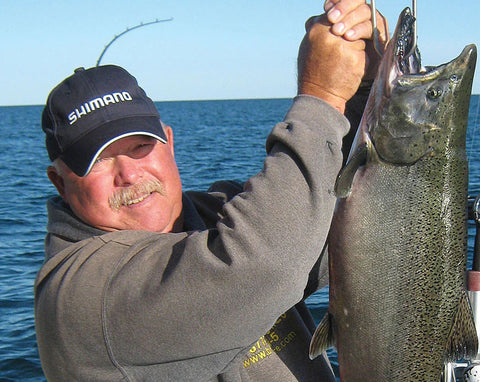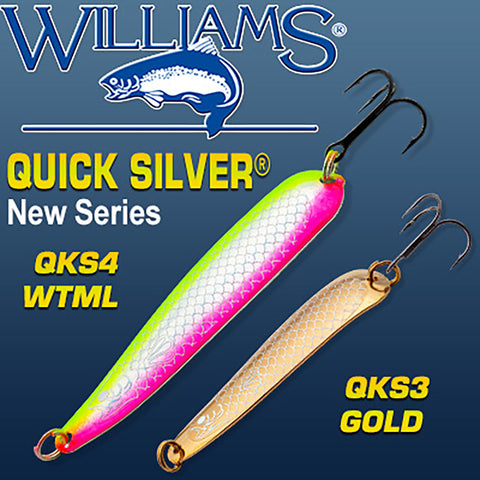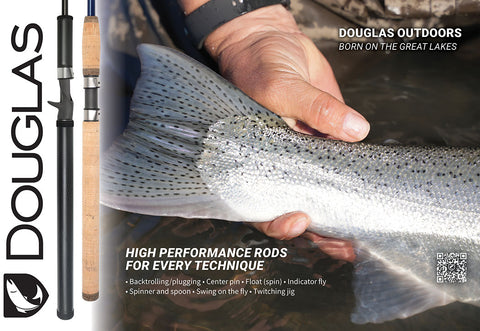In natural lakes and reservoirs, hot fishing is here one minute, and long, long gone the next as a front passes. Smallmouth bass turn off, but follow a relatively predictable routine. After feeding heavily on top of reefs and humps at depths of 2 to 10 feet, they drop down and bury in the shadows as the front hits and pressure increases.

Joe Balog has won a ton of money catching smallmouths on the Great Lakes—more than any other pro in Lake Erie tournament history, in fact. Balog contends that deeper bass are less affected by fronts and often targets the base of structures in 20 to 25 feet of water after a summer front. “Any deeper and bass can suffer from barotrauma when brought up quickly,” he said. “Take your time when fishing deep for bass.”
Smallmouth bass were ripping plastic grubs on every cast. Grabbing the net for my partner, jolts of electricity stabbed the tips of my fingers, even though the storm appeared to be more than 10 miles away (lightning can reach about that far at times).
On the next cast, braided fishing line climbed off the water—straight up so far it disappeared. Static electricity was building in the atmosphere ahead of that approaching storm. Powerful shocks began to emanate from graphite rods, sonar panels, bolts, and every conductor on board. I switched off the electronics.
Those are first, second and third wake-up calls. Time to leave. But how? The fishing was fantastic. Bass were jumping in the boat. In about 10 to 20 minutes the sky darkened, the wind picked up, and the bite probably ended like somebody threw a switch. We didn’t stick around to find out. The storm which seemed to be approaching like a stalking cat suddenly pounced. One boat was still out there, alone, no others in sight, the occupant’s shocked expressions visible during brief flashes created by enough electricity to light up New York for a year.
Then he disappeared in a blinding rain. Maybe he made it, if it was a short run back to his landing. We were diving for cover. But the important question, of course, is: Why do the bass stop biting after the storm passes? Things were going so well, at least one angler ignored every wake-up call. Nobody really knows why bass stop biting after a cold front passes, or why they often remain less active (especially big bass) for a few days afterward. But we have lots of theories.

Craws are kings for smallmouths after fronts, primarily because bass refuse to rise to a bait. After three or more days of stable weather, and stable barometric pressure, smallmouths might rise 20 feet to hit a lure in clear water, but not right after a front.
Cold fronts are dense, moving masses of cold air that wedge right under masses of warmer air. Warmer air is forced upward. Turbulence mixed with rising vapor cause storms to form along the leading edge of the front. Cold fronts move up to two times faster than warm fronts and generally produce more dramatic changes in weather.
Crazy fluctuations in air pressure seem to impact all bass species most. Pressure decreases steadily as the front approaches, hits its lowest point as the front is passing, then jumps upward as the dense, cold air glides in. Bass guides and pros have reported for years that, as a front approaches, bass move shallow or suspend and become highly active. If true (and it sure seems to be), it dispels the theory that bass are moving to equalize swim-bladder pressure. If so, they would move down in the face of decreasing pressure.

Conversely, if the myth was true, summer bass should move up as pressure increases after the front passes. They don’t. In most cases they move down. Post-frontal conditions tend to be characterized by bluebird skies. Is it possible bass are trying to escape excess radiation and brightness? Maybe. But pressure changes are barely measurable below the surface, so nix the swim-bladder stabilization theory.
Another bit of conjecture: Zooplankton will rise in low pressure, baitfish follow, and bass feed accordingly. When pressure increases, zooplankton drop into cover, baitfish stop feeding, followed by bass. But it doesn’t really explain why bass remain less active for days afterward without incorporating other theories. If the plankton stays in cover for days, so what? Bass could feed on crayfish, which don’t focus on plankton. But bass simply remain less active, choosing not to actively feed at all.
Some say bass are simply gorging then resting. Well, duh. They do that during stable weather then climb back into the feedbag the next day. Post-frontal bass don’t do that. Face it. We can’t address the physiological responses to cold fronts fish exhibit because we don’t understand them yet. What we do understand is fishing. We can continue to catch bass after fronts if we apply the usual sol-vents. When a front moves through, and for days afterward in most cases, the strike window of a larger bass (over 4 pounds) shrinks from an area many yards across to mere inches in diameter.
They won’t chase, they won’t even move unless you put a bait right on their noses and even then it might take 5, 6, or more presentations on the same spot to finally trigger an inactive bass. In response, baits must be moved incrementally. It’s slow, it’s tedious, and it’s impossible unless you have a very good idea about exactly where bass retreat after a front.

Break out the jackets and hoodies and get out there after a front. Smallmouths will tuck into crevices where rock meets sand or other substrates at the base of a reef, hump, or shoreline point—usually in depths of 12 to 25 feet. A light jig-grub or jig-worm combo swims slowly past the hideout. Or crawl a football head/plastic craw combo along the transition from rock to sand, adding long pauses here and there.
Targeting a river for smallmouth bass after a cold front is brilliant. The odds rise for catching larger specimens. Smallmouths in rivers may even continue to strike topwaters and cranks, but it’s more likely you’ll need to slow down and swim plastic grubs, crawl hair jigs, or resort to drop-shot rigging. Bass might position less aggressively. Instead of facing into the current in classic feeding positions at the head of a pool or eddy, they might tuck in behind current breaks or position between the center and the tail of a pool.
In natural lakes and reservoirs, hot fishing is here one minute, and long, long gone the next as a front passes. Smallmouth bass turn off, but follow a relatively predictable routine. After feeding heavily on top of reefs and humps at depths of 2 to 10 feet, they drop down and bury in the shadows as the front hits and pressure increases. Smallies tend to tuck in tight at the base of sharp drops and ledges along whatever structure they were using. Typical to find smallmouths right where the sharpest drop-off meets a flat around reefs, points, humps, and channels in depths of 12 to 25 feet. And they refuse to eat unless you politely insist.
As a front approaches, largemouths will be feeding on the surface or in the tops of the weeds at depths of 1 to 12 feet, and as the front pass-es they drop down and bury themselves in the thickest clumps of milfoil, coontail, or cabbage. And in summer they develop lockjaw. They won’t move to take a bait, and their “strike zone” shrinks from yards wide to inches across.
In other words, you have to be pretty certain you’re on fish. Underwater cameras help, because post-front bass can be impossible to find with sonar. But they will eventually respond to slow, persistent presentations. Cast back to the key spot repeatedly. Drop-shot rigging is probably the primary tactic in most waters in these conditions. Dead sticking is a close second. Gently twitching a bait in place, and leaving it in place for long periods of time, will finally aggravate strikes—if the bait is in close proximity, right up in their business. The problem with a drop-shot rig is unwanted movement. Your pulse pounding through your fingers can make a dangling plastic dance. I often find that a football head dressed with a 3-inch craw or 4-inch spider grub works better when the bait needs to remain perfectly still at rest on bottom.
Joe Balog, Lake Erie’s highest-paid pro, has to fish tournaments whether a front passes or not. He says slow down after a front. “The mood of a smallmouth changes under overcast, stormy conditions,” he said. “Smallmouths and largemouths both become negative. My answer has been a drop-shot rig. I won a BFL event in 2009 on Lake St. Clair in a terrible summer storm. The fish were murdering crankbaits right up until the front came through. As soon as the rain hit, it was all drop shots fished very slow.
“In deeper water, Lake Erie fronts can be hit or miss,” he added. “I prefer sun, but took some monster stringers in rain and sudden cold. I always go to a dark bait in those conditions, like a real dark melon tube. I think they see it better. Shallow fish will be unpredictable at best. Deep bass seem less affected from 25 feet on down, and you’ll score bigger fish more consistently down there after fronts pass. I also rely on baits with scent built in, like Berkley Gulp! in those conditions, and I grind them out with a drop-shot rig. Power fish-ing is out. Some baits absolutely will not work if I don’t add scent to them. I think scent is the next frontier in bass fishing.”
After cold fronts pass over natural lakes, reservoirs, and Great Lakes, I commonly find smallmouths tucked into the base of a sharp drop along the deep edge of whatever structure they were using before the front hit. In shallow lakes, these spots might be 10 to 14 feet deep, right along the edge of the last boulders or hard bottom defining the base of a reef where it blends into softer substrates. In deep lakes and reservoirs, it could be 15 to 40 feet deep (release them immediately when they’re hooked deeper than 20 feet), often on a ledge, shelf, or boulder line along the face of a bluff.

Bass Lures: Owner Ultrahead Jig\Persuader Curly Tail; Yamamoto Senko\Eagle Claw Lazer Sharp Weighted Worm Hook; Strike King Rage Craw\Gamakatsu Football Jig; Roboworm\VMC Spinshot Wide Gap Dropshot Hook\1-Ounce Quick Drop Weight; Jensen Jigs Fox-Hair Football.
Whatever can be kept on the key spot for the longest period of time is going to get bit most often. Try to hold it still on a taught line for long periods. Waves, cur-rent, and boat movement will move the line anyway, but that’s ok. A scented 3-inch Yamamoto craw or spider grub on a 1/8- to 1/4-ounce “finesse” football head is a favorite. Another favorite is a Gulp! Minnow or low-action Roboworm on a drop-shot rig. Just the attempt to hold these presentations motionless in waves will impart a subtle variety of tension that rolls, wiggles, lifts, and drops the bait. In calm water, drop-shot rigs work even better with that approach, but jigs must be crept slowly along with long pauses.
Smaller fish predominate the catch when fishing largemouths after a cold front in summer, largely because we fail to change tactics. Big bucket mouths seem philosophically opposed to chasing any-thing—even a slow swim-jig presentation—after a front. Deadsticking plastics—just letting them sit on bottom—can be highly effective for bigger largemouths in the first 24 hours after a front passes. But, again: Knowing where they live is the key.
That spot that produced yesterday—go back to it spot and concentrate on the thickest, deepest cover. Fish slower, and make repeated casts to the same spots. Largemouths bury under the thickest canopies they can find, as if trying to keep every photon of that bluebird sunlight off their bodies. Weights and jigs must penetrate that cover. But if the weed edge is well defined against a bare-bottom flat, swimming and deadsticking a light 1/16-ounce jigworm slowly along the edge can be deadly.
For all species of bass, slow, bottom-oriented tactics rule for several days after a front passes. Most plastic options can be rigged on a belly-weighted hook when deadsticking. Leave the plastic right on bottom for 1 to 3 minutes at a time, move it slowly to a new spot and leave it on bottom again. For smallmouths, my favorite lure is a 1/4-ounce football head tipped with a 4-inch Yamamoto Hula Grub or Strike King Rage Craw, followed closely by the Z-Man Ned Rig. For largemouths, a jig-and-pig, hair jig, jigworm, or deadsticked Strike King Rage Craw stand out—all of which should be crawled right on bottom with long pauses. Swimming jigworms or grubs so slow they almost drag can be effective, too—especially for smallmouths.
Target the same humps, weedlines, and cover that produced best before the front. Largemouths won’t move far. But after the pressure begins to rise, bass will no longer be on top or in classic ambush positions. They tend to bury themselves under weed and wood cover. A heavy, weedless, drop-shot rig is key in that case, employing clip-on weights of 1 ounce or more. Rig it Texas style on an offset hook, like the new VMC Spinshot Wide Gap, for a weedless presentation. This rig can plummet through dense cover and sit there, enticing a strike, as long as you care to leave it in place. Inch it. Twitch it. Then let it sit for minutes. Harder than it sounds.
Scent makes a big difference after a front. Use Berkley Gulp! or PowerBait, as Balog suggests, or apply scents like Lunker City Super Stank, Kick’n Bass, Eagle Claw Crave Bass Gravy, or any of the many other quality scents out there. One of my new favorites on the Great Lakes is BioEdge Fishing Products Gobie Potion. On inland lakes, try their Crayfish or Night Crawler Potions. BioEdge now has over 30 scents composed of oils, amino acids, enzymes and pheromones extracted from actual salt and freshwater prey (steelhead fishermen should try their Salmon Egg Potion).
The weird thing about the cold-front dynamic is how bass respond in an entirely different manner during fall. Cold fronts in fall turn bass on. Get out there on the nastiest days possible, when the water temperature is dropping—bass will be jumping in the boat. It’s like Mother Nature coming after them with a riding crop, extolling them to hurry up and eat—winter’s com-ing. Because bass become less active in winter in Great Lakes country, they need to stock up on calories in fall to stave off the debilitating effects brought on by months in cold, dark water under ice and snow. Odd how, in summer, cold fronts make bass behave as if slightly ill.
Big bass don’t always drop down “deep” after a summer front. They might be in 6 to 8 feet of water if the cover is thick enough. Smallmouths feeding in 6 feet of water often position in depths of 10 to 12 feet after a front, tight to the base of a reef, hump, or point. Spend most of your time fishing dense cover on inside turns in the weedline near sharp breaks, or the base of the break on rocky structure, and bass will eventually reveal themselves—but only if you insist. Politely.

MORE GREAT ARTICLES FROM AMATO MEDIA













2 comments
I’ve been reading Matt Straw’s articles since the 1990’s.Some of them I read over and over again.I think he is one the best multi species writers in the fishing world.I enjoy reading his work.
This year is the 75th year that I have fished Lake Erie. Originally beginning in the central basin of Fairport Harbor, Ashtabula and Conneaut. Then, exclusively in the western basin and its myriad of rockpiles. We killed smallmouth with 1/6 oz Crippled Herrings and eventually with smaller micro Sonic BaitFish (SBF), wrist-finessed through rockpiles and staircased off reef tops. Unlike leadhead jigs, a 1/16 or 1/10 oz SBF swims and glides through structure vs plunging into it. Another deadly smallie/walleye lure was a 1/4 oz 24K gold, or solid chartreuse, Erie Shiner weight forward spinner. But, it was picking the rocks with the tiny SBF that produced when poor weather systems sent trollers and drifters home without a fish to show for their efforts. The SBF is a Mack’s Lure Co. bait with Bob Loomis its nat’l sales mgr.